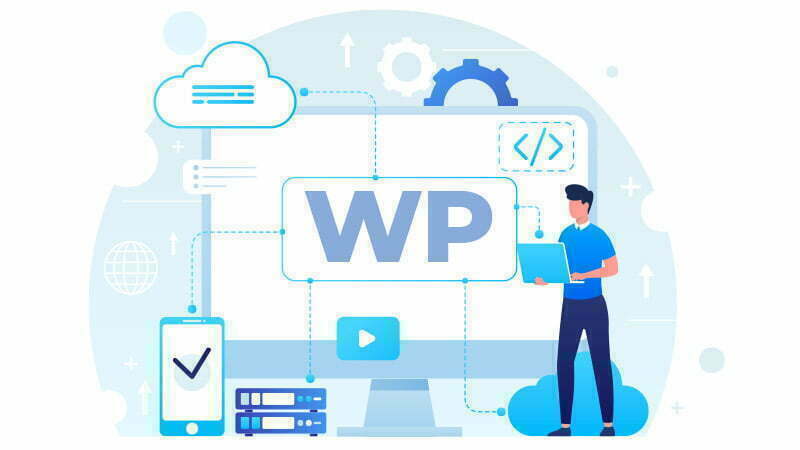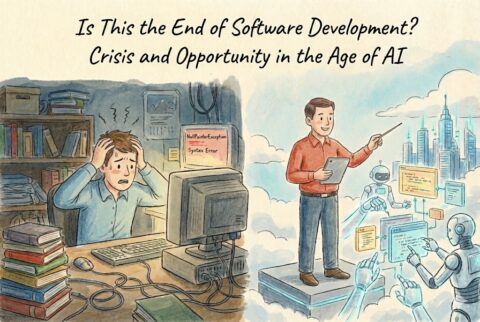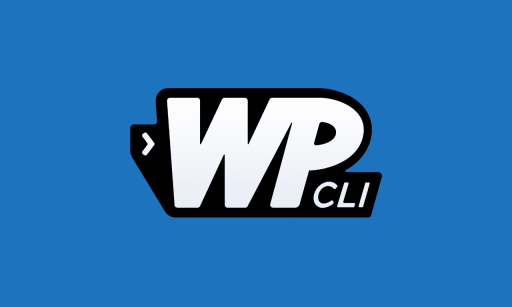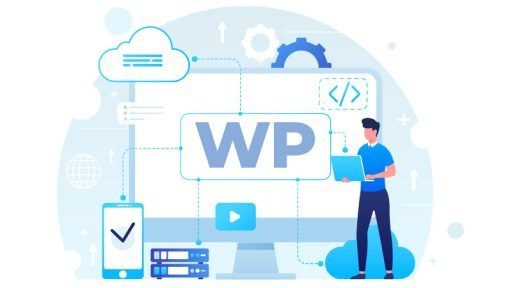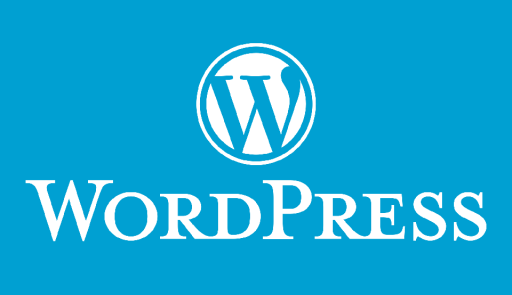Headless CMSs have grown in popularity in recent years as more and more companies have moved towards a decoupled architecture for their websites and applications. These systems allow for greater flexibility and scalability, as the frontend and backend are not tightly coupled, and the content can be easily repurposed for different channels such as websites, mobile apps, and voice assistants.
While Contentful and WordPress are among the most popular headless CMSs, there are many other options available that offer unique features and capabilities.
Here are more information about Headless WordPress and Contentful
- Headless WordPress: WordPress is one of the most popular content management systems in the world, and it’s often used as a headless CMS. This means that the backend of WordPress is used to manage and organize content, while the frontend is built separately and interacts with the backend through APIs. By using WordPress as a headless CMS, developers can take advantage of its extensive content management features while also having the freedom to build a custom frontend. Some popular WordPress plugins that enable headless usage are “WordPress REST API (WP API)” and “WordPress Headless”. Another popular way to use WordPress as a headless CMS is by utilizing the WP GraphQL plugin, which allows developers to query the WordPress data using GraphQL, which is a query language that allows for more efficient and flexible data retrieval and manipulation.
- Contentful: Contentful is a cloud-based headless CMS that allows developers to build and manage digital content across multiple platforms and channels. One of the unique features of Contentful is its “content model” feature, which allows users to define custom data models for their content. This makes it easy to manage structured content such as products, events, and recipes. Contentful also provides a web-based Content Management Interface (CMS) for editors and marketers, and a robust set of APIs for developers. It’s often used for large, complex projects.
Both Headless WordPress and Contentful are highly flexible and powerful headless CMSs that can be used to manage and distribute content across multiple channels. They both can handle different types of data, which makes them suitable for a variety of projects, large or small, simple or complex. The decision to use one or the other will depend on your specific needs, budget and preference.
Here are a few alternative headless CMSs that you may want to consider:
- ButterCMS – ButterCMS is a simple and easy to use headless CMS that is well-suited for small and medium-sized businesses. It provides a wide range of features such as built-in blogging and e-commerce capabilities, and a robust API for easy integration with any frontend framework. (https://buttercms.com/)
- Prismic – Prismic is a powerful headless CMS that is designed for larger organizations. It provides a variety of features such as multi-language support, collaborative editing, and versioning. It also has a large and active community that provides support and contributions to the open-source project. (https://prismic.io/)
- GraphCMS – GraphCMS is a headless CMS that emphasizes performance and scalability. It uses GraphQL as its query language, which allows for efficient data retrieval and manipulation. It also includes built-in support for both traditional content types as well as custom models, making it a great choice for complex projects. (https://graphcms.com/)
- Cosmic JS – Cosmic JS is a headless CMS that emphasizes its ability to easily integrate with any tech stack and its ease of use. it provides a web-based dashboard for content authors and a simple API for developers, it also offers built-in serverless functions, webhooks and more. (https://www.cosmicjs.com/)
- Strapi – Strapi is a open-source, self-hosted, customizable, and headless CMS, that has a strong development community, It allows you to easily manage your content and distribute it anywhere you want using its built-in RESTful and GraphQL API, it also support most common databases and can be deployed anywhere (https://strapi.io/)
These are just a few examples of the many headless CMSs available. When choosing a headless CMS, it’s important to consider the specific needs of your project and your organization. Factors to consider include scalability, ease of use, and support for different languages and platforms.
Frequently Asked Questions
What is a headless CMS? A:
A headless CMS is a content management system that separates the backend (content management) and frontend (presentation) components. This allows for greater flexibility and scalability, as the frontend and backend can be developed independently and the content can be easily repurposed for different channels.
What are the benefits of using a headless CMS?
The benefits of using a headless CMS include: increased flexibility and scalability, ability to use multiple frontend technologies, ability to repurpose content across multiple channels, and greater control over the frontend development process.
What are some popular headless CMSs?
Some popular headless CMSs include Contentful, WordPress, ButterCMS, Prismic, GraphCMS, Cosmic JS, and Strapi.
Q: How do I choose the right headless CMS for my project
When choosing a headless CMS, it’s important to consider the specific needs of your project and your organization. Factors to consider include scalability, ease of use, and support for different languages and platforms. Evaluating and testing different options will help you choose the one that best fits your organization.
What is the difference between a headless and a traditional CMS?
Traditional CMS typically has a monolithic architecture that tightly couples the backend (content management) and frontend (presentation) components. A headless CMS, on the other hand, separates the backend and frontend, allowing for greater flexibility and scalability as the frontend and backend can be developed independently.
Can I use a headless CMS with an existing website or application?
Yes, headless CMSs are designed to be decoupled from the frontend, making them easy to integrate with existing websites or applications.
Can I use a headless CMS to build a multilingual website?
Yes, some headless CMSs like Prismic have built-in support for multiple languages, allowing you to easily manage and deliver content in different languages. Additionally, many headless CMSs provide a powerful API which allows you to build and manage your own multilingual solution by using specific languages libraries.
Is a Headless CMS more expensive than a traditional CMS?
It depends on the specific headless CMS you choose and on your specific needs. Some headless CMSs can be more expensive than traditional CMSs due to the increased scalability and flexibility they provide. But others can be free or at low cost depending on the size of your project and the features you need.
What kind of technical expertise do I need to work with a headless CMS?
The amount of technical expertise required to work with a headless CMS will vary depending on the specific platform you choose. Some headless CMSs are designed to be easy to use and require little technical expertise, while others are more complex and require a higher level of technical skill. Some common technical skills that are needed are knowledge of APIs, web development, and content management.
Conclusion
In conclusion, Headless CMSs are becoming increasingly popular as they offer greater flexibility and scalability than traditional CMSs. There are many alternative headless CMSs available, each with their own unique features and capabilities. From simple and easy to use options like ButterCMS to more powerful options such as Prismic and GraphCMS, to open-source options like Strapi. Additionally, the Headless WordPress with the use of plugins like “WordPress REST API (WP API)” and “WordPress Headless” and “WP GraphQL” are also becoming a more popular options as they make a perfect match with the backend experience of WordPress and the flexibility that a modern frontend development stack needs. When choosing a headless CMS, it’s important to consider the specific needs of your project and your organization and evaluate different options to choose the one that best fits your organization.
